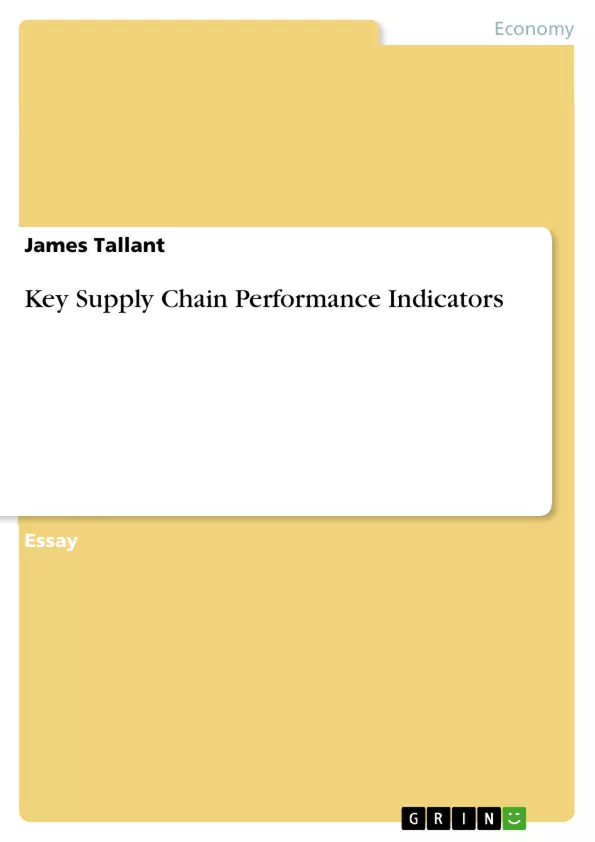Key Supply Chain Performance Indicator Paper
Supply chain management through the use of key performance indicators (KPI’s) offers organizations improved profit margins and lower costs. Saxena (2009) comments “KPI initials could stand for “keep players informed” because the right set of key performance indicators can go a long way toward making sure companies and their third party logistics are truly on the same page” (p. 22, para. 3). Measuring key performance indicators in a quantifiable manner is used to evaluate, measure, and compare different organizations in a similar manner for matches in strategic and operational goals. As illustrated below in the hierarchy of supply chain metrics, Miles (2010), a supply chain’s health is measured by foundation blocks or key performance indicators. Failure to identify, measure, or assess, diagnose, and correct through the use of key performance indicators such as on-time delivery, inventory turns, and inventory carry costs prevent the supply chain from reaching its full potential.
Inhaltsverzeichnis (Table of Contents)
- Key Supply Chain Performance Indicators
- The Hierarchy of Supply Chain Metrics
- On-time Delivery
- Inventory Turns
- Inventory Carry Costs
Zielsetzung und Themenschwerpunkte (Objectives and Key Themes)
This paper examines the significance of key performance indicators (KPIs) in enhancing supply chain management, showcasing their role in achieving profitability and cost reduction. The author elaborates on the importance of measuring and evaluating KPIs, highlighting their contribution to the overall health of the supply chain.
- The importance of KPIs in supply chain management
- The impact of KPIs on profitability and cost reduction
- The role of KPIs in evaluating and comparing organizations
- The use of KPIs to diagnose and correct supply chain issues
- The benefits of using KPIs for vendor and supplier evaluation
Zusammenfassung der Kapitel (Chapter Summaries)
- Key Supply Chain Performance Indicators: This chapter introduces the concept of KPIs and their importance in supply chain management. The author outlines the hierarchy of supply chain metrics, emphasizing the significance of KPIs as foundation blocks for a healthy supply chain.
- On-time Delivery: This chapter explores on-time delivery as a crucial KPI, highlighting its impact on overall supply chain efficiency and productivity. The author discusses the factors that influence on-time delivery performance and the consequences of poor on-time delivery.
- Inventory Turns: This chapter focuses on inventory turns as a KPI, explaining its importance in minimizing financial liability and maximizing revenue potential. The author discusses the benefits of reducing inventory holding costs and how inventory turns can be improved through various strategies.
- Inventory Carry Costs: This chapter examines inventory carry costs as a KPI, outlining the adverse effects of holding inventory for extended periods. The author discusses strategies for minimizing inventory holding costs, emphasizing the importance of efficient inventory management.
Schlüsselwörter (Keywords)
Key performance indicators (KPIs), supply chain management, on-time delivery, inventory turns, inventory carry costs, profitability, cost reduction, vendor evaluation, supplier evaluation.
- Quote paper
- James Tallant (Author), 2010, Key Supply Chain Performance Indicators, Munich, GRIN Verlag, https://www.grin.com/document/167341



